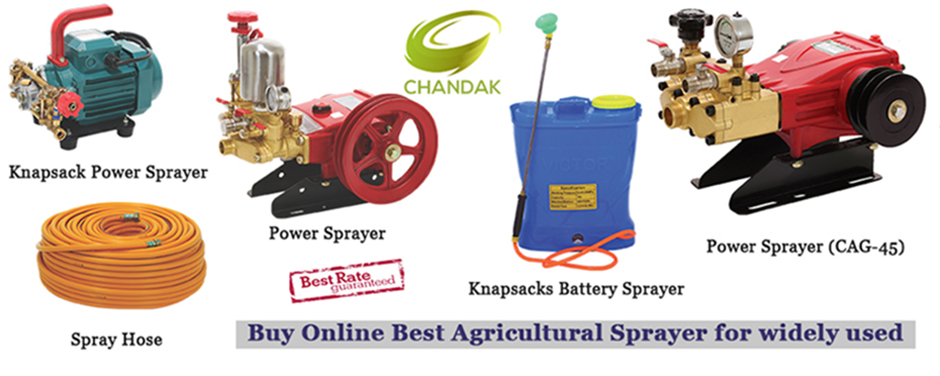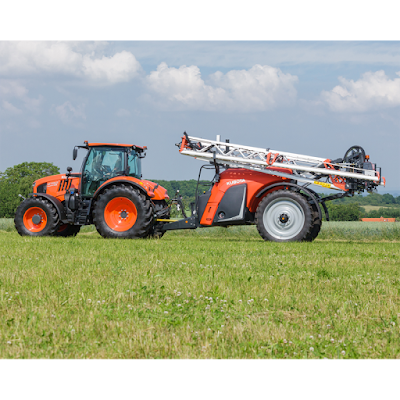Plant Protection
equipments
The choice of agricultural equipment depends on its specific
use and the need of a particular pest control measure.
·
The correct usage of equipment and its proper
maintenance are important factors which affect the ability to place pesticides
on target more economically and effectively.
· Selecting the right agricultural sprayer for
pesticide application is important for successful pest control.
The complete knowledge of pest problem is important to
define the target i.e., location of the pest (on foliage, under the leaves, at
root zone etc).
¨ The
application techniques ideally should be target oriented so that safety to the
non-targets and the environment is ensured. Therefore, proper selection of
application equipment, knowledge of pest behavior and skillful dispersal
methods are vital.
¨To
cover the target with maximum efficiency and minimum efforts to keep the pest
under control as well as minimum contamination of non-targets.
Ø
Convenient to operate
Ø
Easy to clean
Ø
Non-absorbent
Ø
Corrosion resistant
Ø
Resistant to damage
Ø
Convenient to fill
Ø
Durable
Ø
The pesticide label
Ø
Perform proper maintenance
Ø
Use proper operation procedures
Ø
Set it up correctly
Ø
Select the right equipment
To Enhance Safety and Benefits and to Get the Most From Any
Sprayer:
Ø
Ultra low volume or controlled-droplet
applicators (ULV/CDA)
Ø
knapsack power sprayers
Ø
Tractor-mounted sprayer
Ø
Hand compressed sprayers
Ø
Hand sprayers and atomizers
Types
of Plant Protection Equipment
Ø
Low pressure hydraulic High pressure ULV
Chemigation or injection
Ø
Speed required to treat an area (this will
depend on type of crop, stage of crop growth, and volume of spray solution to
be applied).
Ø
Operating
cost, and
Ø
Availability of after sales service,
Ø
Cost of equipment,
Ø
Durability of equipment,
Ø
Area requiring treatment
Ø
Availability of labor (human or animal power),
Ø
Availability of diluent (water, oil, kerosene,
etc.),
Ø
Frequency of pesticide application,
Selection
and use of Spraying Equipment Spraying equipment should be selected on the
basis of:
Ø
Never unclog a nozzle by blowing through it.
Ø
Clean
nozzles with a soft tool, not metal.
Ø
Check for nozzle clogging or pattern changes.
Ø
During Spray Applications
Ø
Do not use herbicide- designated equipment for
other applications
Ø
Re-use rinse water
Ø
Check operation and repair
Ø
Switching pesticides ¤Making repairs ¤ Clean equipment before
Ø
Wipe off residues.
Ø
Flush hoses, tanks, nozzles.
After
Spraying
Ø
Installing and Maintaining Equipment Once
equipment has been installed: • It must be maintained regularly • Only
qualified people should maintain it • Set up a maintenance schedule with your
supplier or manufacturer
Care
and upkeep of hand sprayer
¨
General maintenance ¨Care
and Maintenance of Plant protection Equipment
& Care and upkeep of pp
equipment in transportation¨
Care and upkeep of pp equipment when taken to field ¨ Care and upkeep of pp equipment
when not in use ¨ Care
and upkeep of power sprayers and dusters ¨duster
The cleaning and washing of the chemical
tank, discharge lines, nozzles, etc., are to be done regularly after the day's
spraying work is completed otherwise the residues of chemicals used for
spraying acts on the parts and causes corrosion and deterioration of materials.
Special care has to be taken for
maintaining the plant protection equipment. The pesticide formulations are
chemically aggressive on metals, etc.
For
best quality purchase of power sprayers and brush cutters reach at chandakagro.com
















